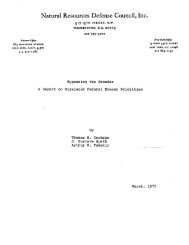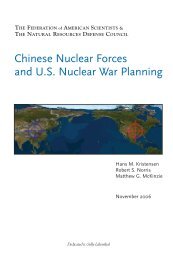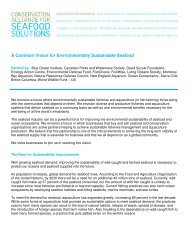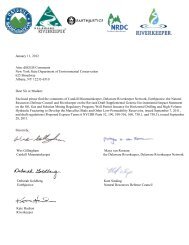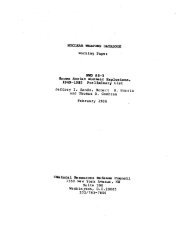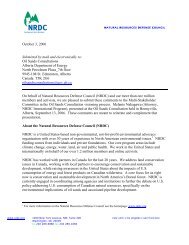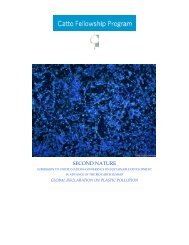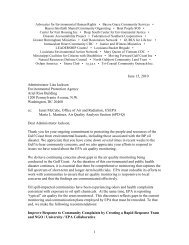3. Nuclear weapons - NRDC Document Bank - Natural Resources ...
3. Nuclear weapons - NRDC Document Bank - Natural Resources ...
3. Nuclear weapons - NRDC Document Bank - Natural Resources ...
You also want an ePaper? Increase the reach of your titles
YUMPU automatically turns print PDFs into web optimized ePapers that Google loves.
However, after much controversy and criticism, Secretary of State Shultz<br />
announced that while a 'broader interpretation' of the treaty was 'fully<br />
justified', the USA would honour the 'restrictive interpretation of the treaty's<br />
obligations'. This decision could be reversed at any time.<br />
SALT II compliance<br />
The SALT II Treaty, signed by the superpowers in 1979, formally expired at<br />
the end of December 1985. Although never ratified by the USA (and<br />
consequently not ratified by the USSR), each state repeatedly pledged to abide<br />
by its provisions, provided the other state did the same.<br />
Currently, the USA has about 2000 operational delivery systems accountable<br />
under SALT, whereas the USSR has about 2500, a number which would<br />
have been reduced to below the 2250 limit had the USA ratified the treaty.<br />
Both parties have taken measures to comply with the provisions of SALT I and<br />
II, including deactivating older delivery systems when new ones have been<br />
introduced. For example, the USSR and the USA have both deactivated<br />
submarines to compensate for new deployments. There is no doubt that the<br />
main provisions, setting numerical limits on strategic nuclear weapon systems,<br />
have been observed.<br />
On a number of occasions the present US Administration has accused the<br />
USSR of not complying with specific SALT II provisions. Its strongest<br />
accusation concerns the new Soviet mobile SS-25 single-warhead missile,<br />
which Defense Secretary Weinberger called 'an unquestionable violation of<br />
Soviet assurances given to us under the SALT II accord'.128Under SALT II,<br />
both parties are limited to developing and deploying one 'new type' of ICBM.<br />
The USSR announced that its one permitted 'new' ICBM is the SS-24 missile<br />
with 10 MIRV warheads. But the USA claims that the SS-25, which was first<br />
deployed in 1985, constitutes a second 'new' ICBM, thus violating SALT II.<br />
The USSR states that the SS-25 is a permitted modification of an earlier Soviet<br />
missile, the SS-1<strong>3.</strong> SALT II does permit modification of missiles that were<br />
flight-tested before May 1979ifthe changes fall within certain percentage limits<br />
of missile characteristics such as length, diameter, launch-weight and<br />
throw-weight. The USA maintains that even if the SS-25 is a modification of the<br />
SS-13, its single re-entry vehicle weighs less than half of the missile's<br />
throw-weight, in violation of a treaty obligation. The issue rests on whether the<br />
USA knows enough details about both missiles to press its allegations.<br />
A second SALT II compliance question concerns the Soviet Union's<br />
commitment not to increase the number of strategic nuclear delivery vehicles<br />
(SNDVs) in its arsenal. The United States charged in its 23 December 1985<br />
compliance report that the Soviet Union has deployed SNDVs above the 2504<br />
total deployed when SALT II was signed in 1979. However, according to the<br />
US Joint Chiefs of Staff, as of 1 January 1986 the Soviet Union had 2477<br />
SNDVs.129<br />
Another issue which has been raised by the US Administration concerns the<br />
encryption of telemetric data produced during Soviet missile tests. According<br />
to the treaty, national technical means of verification must not be impeded



